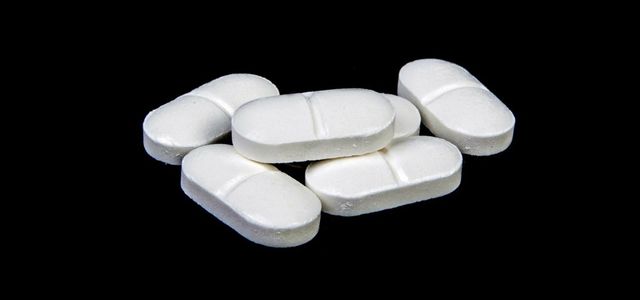
Paracetamol has different side effects and should not be taken lightly. Since it can lead to interactions in combination with certain medications, it is important to take a look at the package insert.
Paracetamol is one of the most popular Painkillers worldwide and has been on the market since the 1950s. In 1977 the World Health Organization (WHO) added paracetamol to the list of “essential medicines” recorded. The pain reliever is only available from a pharmacy and is available in various doses. It can be obtained without a prescription, but should only be taken after consulting a doctor.
For several years now, paracetamol has also been called Combination preparation available together with other active ingredients, for example as a remedy for colds.
Paracetamol: side effects of the pain reliever

(Photo: CC0 / Pixabay / sweetlouise)
Researchers have not yet been able to fully clarify how exactly paracetamol works. What is clear, however, is that paracetamol Lowers fever and Relieves pain. You can use it, for example, for headaches, toothache and body aches.
There are numerous in the official package insert for a tablet with 500mg active ingredient Side effects of acetaminophen named (PDF):
- Increase in liver enzymes (serum transaminases),
- Low blood platelets (thrombocytopenia)
- Low white blood cells (agranulocytosis)
- allergic reactions (skin rash / hives),
- Shock reaction,
- Narrowing of the airways (analgesic asthma),
- severe skin reactions.
At a higher concentration, the side effects of paracetamol can be more severe, as well as others unwanted symptoms occur (package insert). These include:
- Symptoms of intoxication,
- Liver damage / liver failure
- dizziness,
- Malaise,
- Fever,
- Sweat,
- Drowsiness,
- Tremble,
- Headache,
- Visual disturbances
- Depression,
- Confusion and hallucinations,
- Jaundice,
- muscle pain,
- Kidney failure.
The drug experts at Stiftung Warentest point out that paracetamol can also lead to fatal liver damage. The breakdown products of the paracetamol tablet can overload the liver. The experts see this danger above all in one Overdose as well as one Continuous use.
Note: You should only take paracetamol after consulting your doctor. If you suspect side effects, please get help immediately. Yellow skin, noticeably light-colored stools and dark urine indicate liver damage. Signs of kidney damage include painful kidneys, blood in the urine and water retention in the body, such as swollen legs.
Paracetamol interactions
Paracetamol is a tried and tested pain reliever, but you shouldn’t take it in combination with other pain relievers. Some active ingredients can too Interactions and severely damage the liver, for example:
- Carbamazepine,
- Phenobarbital,
- Phenytoin,
- Probenecid,
- Metoclopramide,
- Domperidone,
- Cholestyramine,
- Salicylamide,
- Zidovudine,
- Rifampicin.
Notice: In addition to paracetamol, you may be taking a combination preparation that also contains paracetamol. However, the total dose of both drugs must not exceed the maximum daily dose. This is for adults and adolescents from the age of 12 with a single dose of 500 mg to 1000 mg, the maximum daily dose is 4000 mg.
Taking paracetamol: risk groups

(Photo: CC0 / Pixabay / SharonMcCutcheon)
- If you have severe liver damage or kidney disease, you should definitely not take paracetamol.
- You should never drink alcohol before, during or after taking paracetamol. It ensures that paracetamol can attack the liver more easily.
- children: There is no minimum age, but the dosage depends on the child’s body weight. Parents should always consult their pediatrician.
- Pregnant / breastfeeding mothers: The experts at Stiftung Warentest consider a short-term intake of paracetamol to be justifiable during breastfeeding. However, manufacturers must point out that paracetamol passes into breast milk. There are no known negative consequences for the child. Pregnant women can also take paracetamol for a short time.
- People over 60 years: If there is no liver or kidney disease, older people can also take paracetamol temporarily. Basically, however, it should initially be dosed lower and not taken in combination with other painkillers. Anyone who takes other medication should clarify this with a doctor.
Paracetamol + caffeine is not very suitable
Caffeine speeds up the effects of paracetamol. Therefore, there are various combination preparations with the active ingredient paracetamol and caffeine. However, the drug experts at Stiftung Warentest rate this combination as “unsuitable”.
The reason: It is a “not useful combination of painkillers and caffeine”. The experts see the danger that the stimulating effect of caffeine can lead to taking the preparation too often and for too long. At the same time, this increases the risk of side effects. This combination pain reliever is not suitable for children, pregnant women and breastfeeding women.
Read more at Utopia:
- Aspirin: side effects you should know about – Techzle.com
- What to do if you have diarrhea Effective home remedies instead of medication
- Dispose of medication: residual waste, collection point or pharmacy?